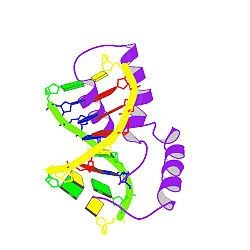Creative Biolabs is the world-leading expert in the field of iPSC technology. Based on our extensive experience and advanced platform, we can provide various services regarding iPSC including iPSC generation and applications. Now we offer the gender determination service of iPSC.
Derived from adult somatic cells by iPSC reprogramming, the induced pluripotent stem cells (iPSCs) shows great potential in the field of disease modeling, regenerative therapies, and development studies. In general, the gender determination is a two-step process regulated by hormone production and gender chromosome content. The gender chromosome content drives the differentiation of bipotential gonadal ridges into either ovary or testis. Subsequently, a range of physiological characteristics are established by gender hormones. It has been reported that the presence of the Y chromosome and specifically related gene SRY may play important roles in gender determination during the growth and differentiation of iPSCs.
 Fig.1 The structure of SRY. Distributed under Public Domain, from Wiki, without modification.
Fig.1 The structure of SRY. Distributed under Public Domain, from Wiki, without modification.
SRY protein is a DNA-binding protein encoded by the SRY gene which is located in the X degenerate region of the Y chromosome. It has been found that the gender-determination gene SRY can be expressed in the male iPSCs. Furthermore, the expression of SRY may affect the autosomal gene expression and result in differences in steroid metabolism. SRY expression is induced by reprogramming of male fibroblasts to iPSCs and the reduced expression levels of OCT-4 and NANOG may affect its expression. In addition, the differences in autosomal gene expression between male and female iPSCs have also been detected. We found that only part of genes differentially expressed relate to SRY-binding sites which means SRY is only partly responsible for the differential gene expression between male and female. In this case, these are three groups of gender-differential genes: (1) genes involved in cholesterol synthesis (DHCR24, SQLE, and CYP51A1), (2) genes involved in the generation of gender steroids (SRD5A3 and HSD17B12), and (3) genes involved in cholesterol or steroid homeostasis (OSBPL9, PCSK9, ABCA1, HDLBP, PBX1, and CPT1C). In summary, during the early iPSC development, the Y chromosome and male-specific gene SRY present great contribution to sex-dimorphic traits.
Along with over a decade rich experience in iPSC technology, Creative Biolabs now provides various services regarding iPSC generation and iPSC applications. We are confident in offering the highly efficient services and products in good quality to our customers all over the world. If you are interested in our services, please do not hesitate to contact us for more details.
This service is crucial for studies where gender-specific responses and genetic backgrounds play a significant role in experimental outcomes. Our methodology ensures reliable and reproducible results, enhancing the integrity of your research.
A comprehensive report is provided, detailing the methods used, quality control results, and conclusive evidence of the iPSC gender. Upon request, we can supply the raw data files from karyotyping, FISH, PCR, and NGS analyses. Our team of experts is available for consultation to discuss the findings and their implications for your research.
To utilize our gender determination of iPSC, please contact our customer support team to discuss your project requirements. We provide full support from sample submission to data interpretation, ensuring a seamless experience for your research endeavors. We look forward to assisting you with your gender determination and stem cell research needs.
Below are the findings presented in the article related to gender determination of iPSC.
Researchers have induced the generation of iPSCs from sex-mixed mouse embryonic fibroblasts (MEFs) with different starting sex ratios using the widely accepted iPSC generation system. The initial mixed-sex MEFs were divided into three groups: 10% XY + 90% XX, 30% XY + 70% XX, and 50% XY + 50% XX. After induction, the sex of the GFP-positive single iPSC clones was determined by PCR using primers targeting the male-specific Sry gene, and the PCR results were validated using FISH and chromosomal G-banding analysis.
The results indicated that the sex-mixing induction strategy may lead to an imbalance in the iPSC sex ratio. After reprogramming, different proportions of female initiating MEFs with different male ratios produced different proportions of female iPSCs, respectively. Moreover, these female iPSCs had the pluripotency typical of embryonic stem cells.
For Research Use Only. Not For Clinical Use.